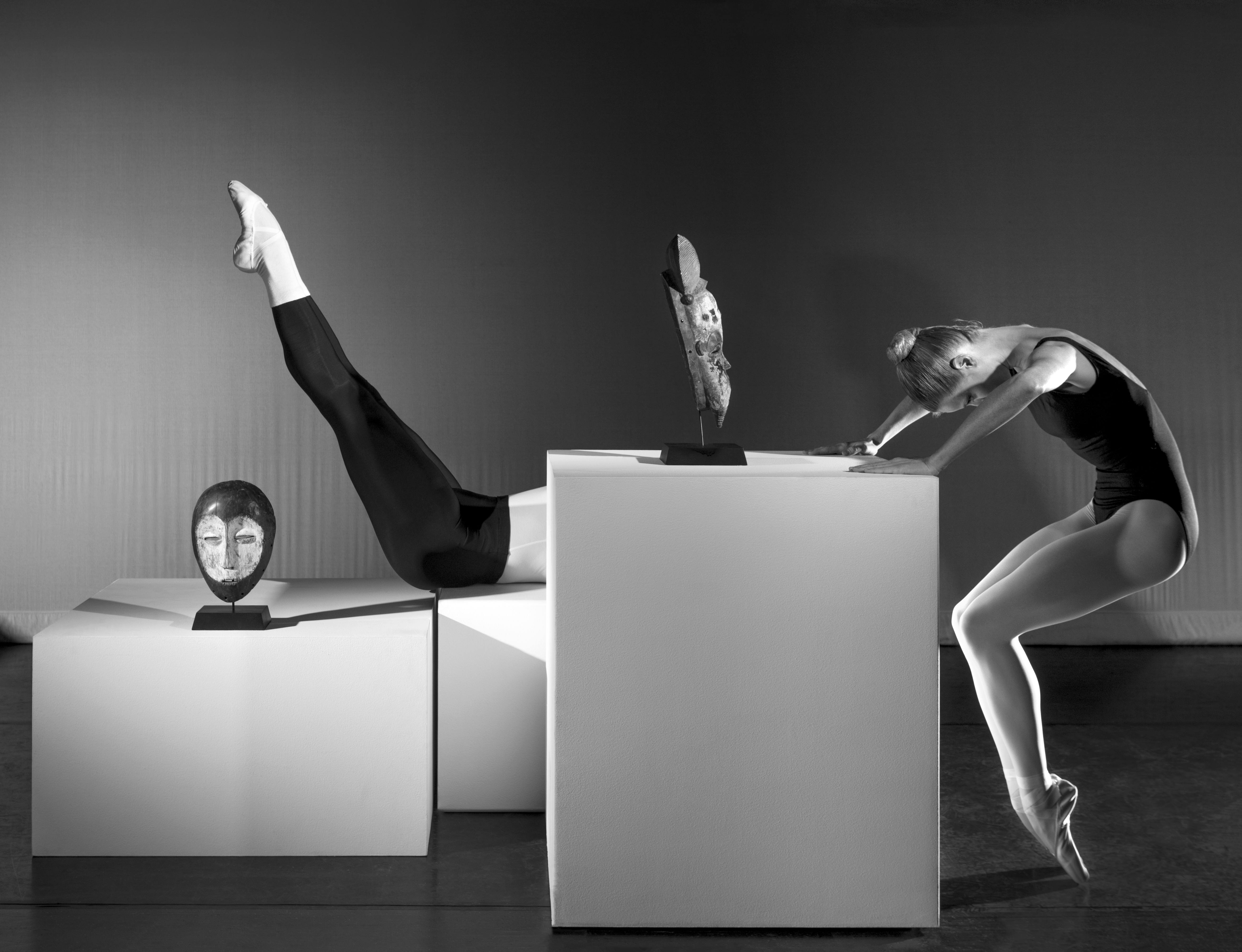 Artist and dancer Brendan Fernandes explores the roles of both ballet and the museum in constructing cultural hierarchies in his black-and-white photograph series "As One." (Photo courtesy the artist and Monique Meloche Gallery, Chicago.)Steel sculptures and neon lights by artist and dancer Brendan Fernandes, which are based on fabricated African masks sold to tourists in New York City, anchor one of three exhibitions — “The Living Mask” — that opens Sept. 6 at DePaul Art Museum.
Artist and dancer Brendan Fernandes explores the roles of both ballet and the museum in constructing cultural hierarchies in his black-and-white photograph series "As One." (Photo courtesy the artist and Monique Meloche Gallery, Chicago.)Steel sculptures and neon lights by artist and dancer Brendan Fernandes, which are based on fabricated African masks sold to tourists in New York City, anchor one of three exhibitions — “The Living Mask” — that opens Sept. 6 at DePaul Art Museum.
The second exhibition, “Someday, Chicago,” examines the work of American-born photographer Yasuhiro Ishimoto through his images of Chicago, where the photographer lived for several years and continued to return to throughout his life.
Also on display will be images of screaming women taken by Chicago photographer Whitney Bradshaw since the Women’s March on Washington in January. “Outcry” asks viewers to contemplate difficult issues related to sexism, power, race, representation and social justice all while demanding that women be heard and believed.
“When I think about the fall exhibition slate, I think about the term ‘outcry’,” says Julie Rodrigues Widholm, director and chief curator of the museum.
Not only outcry around harassment and sexual assault that Bradshaw used to help shape her exhibition under that title, but also outcry in that Yasuhiro Ishimoto was interned during World War II due to his Japanese ethnicity, Widholm explains.
"How did that happen and how can we make sure it doesn’t happen again?" she asks.
The fall exhibition also reflects an outcry around the colonization of Africa - the systemic oppression of certain populations and the misrepresentation of African masks in museums that Brendan Fernandes presents in his exhibition, Widholm says.
“We hope these exhibitions spark discussions among museum visitors about not only the issues being raised within the artwork, but other areas in society where more justice is needed,” Widholm notes.
The exhibitions open Sept. 6 and run through Dec. 16, 2018, at the museum on the Lincoln Park Campus.
DePaul Art Museum is located at 935 W. Fullerton Ave. Hours are 11 a.m. to 7 p.m. Wednesday and Thursday; 11 a.m. to 5 p.m. Friday and 11 a.m. to 5 p.m. Saturday and Sunday. The museum is closed Monday and Tuesday. Admission is free. Additional information at http://museums.depaul.edu or 773-325-7506.
Brendan Fernandes: “The Living Mask”
A classically trained ballet dancer, Fernandes started thinking more critically about the profession after he left it.
“Being an artist who works through things like post-colonial history and theories, I started to conflate the two and think about ballet as a Western form of hegemony in a way,” says Fernandes. “Ballet began during the Renaissance and took off in France under Louis XIV. We see ballet on stage and it's beautiful and romanticized, but I want to create a new dialogue, a new kind of understanding to this form as well.”
Yasuhiro Ishimoto: “Someday, Chicago”
Born in the United States and raised in Japan, Ishimoto returned to the U.S. in his late teens. Only a few years later he became one of more than 115,000 Americans with Japanese ancestry forced into internment camps during World War II. It was in the internment camp where he first developed an interest in photography, showing a formal rigor and keen eye for composition, according to the exhibition’s guest curators, Jasmine Alinder and John Tain.
Following his release at the end of the war, the U.S. government sent Ishimoto to Chicago, where he developed a lifelong love of the city and continued his work with photography.
Whitney Bradshaw: “Outcry”
Defined as a loud, piercing cry or cries expressing excitement, great emotion or pain, a scream can be a powerful tool for the overlooked to express public anger or disapproval. In her exhibition for DePaul Art Museum, Bradshaw’s “Outcry” features 108 portraits of women screaming that she’s photographed since Jan. 20, 2018, the day of the Women’s March on Washington.
Each photograph is a document of much more involved events created by Bradshaw in her home studio where she invites groups of women to scream in response to the silencing they’ve experienced. “Outcry” challenges stereotypes around women and femininity, while celebrating their resilience and insisting on a reconsideration of beauty and power, she says.